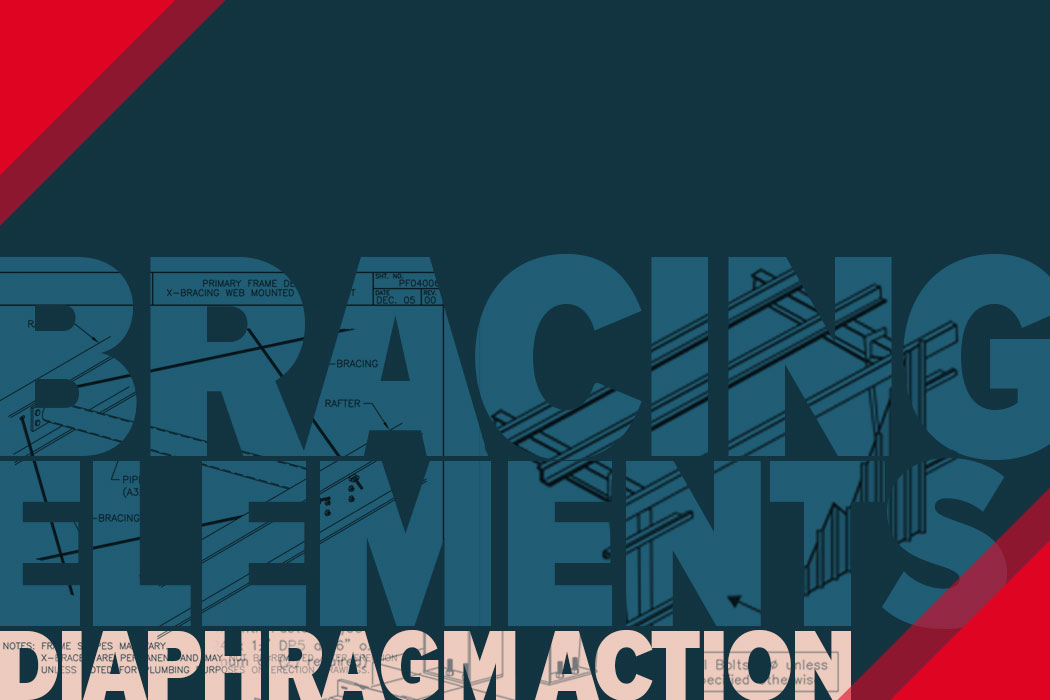January 6, 2016
by Star Building Systems

Our last blog about bracing elements was so well received; we’ve decided to take the conversation a little further. Beyond Fixed Base Bracing Columns, “X” Bracing (or Rod Bracing), and Portal Frames, there’s another type of bracing that is totally worth investigating, because it’s one of the most popular—and that’s Diaphragm Action.
Diaphragm Action is the ability of a through fastened panel (PBR) to resist lateral loads. In other words, the panel itself acts as the bracing element.
Traditionally, external loads (gravity and wind) apply loading to the panel, which transfers it to the secondary (purlins and girts) and then to the primary framing (frames). Diaphragm Action is an additional capacity of the panel to transfer the lateral loads to the outside edges of the panel – to the eave for roof panels and to the ground for wall panels. This stiffness provides stability and replaces the need for other bracing elements.
There are lots of great advantages to Diaphragm Action, but one of the best attributes is that it can be easy on the checkbook. If a structure has a through fastened panel (PBR), then diaphragm action is the most cost effective method of bracing, as it utilizes the panel and therefore no additional structural elements are necessary. Saving dollars is always a mega-plus, and because of this, Diaphragm Action is probably the most common type of bracing, next to “X” Bracing. However, even though it’s common, it’s not always suitable for your building.
Diaphragm Action is ONLY available for a through fastened panel—PBR. As accessories are added to a structure (doors, windows, open areas), panel is removed. As panel is removed, the diaphragm capacity is diminished. It’s a domino effect, because as the diaphragm capacity is diminished, less load resistance is available until eventually the diaphragm capacity is exceeded and a different bracing element must be used. So keep this in mind when you’re adding lots of open spaces and considering Diaphragm Action.
The last thing to consider with Diaphragm Action is environmental loading. As the environmental loads increase (Wind, Snow, Seismic) the amount of load that needs to be resisted also increases. PBR panel has a finite amount of load capacity, so eventually the diaphragm capacity will be exceeded, and a different bracing element must be used.
When it comes to NOT CHOOSING Diaphragm Action, this is what you have to keep in mind:
And that’s that! Diaphragm Action might be right for your next structure, but just because it’s popular and cost effective, don’t skip your homework before choosing it as your bracing element.
Become part of the powerful Star network. We invest in builders who understand the value of results and provide support that develops strong relationships between you and the entire Star team.
Your building is the cornerstone of the community where people live, work and play. Find a local Star Authorized Builder and let us help you bring your vision to life.